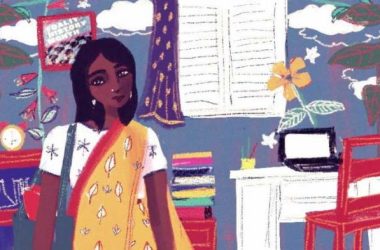‘Cape Cod Morning’ by Edward Hopper, 1950, Smithsonian American Art Museum, Gift of the Sara Roby Foundation, 1986.6.92
One of my kindergarten classmates is a middle-aged woman whom I will call Jade. She presents a childlike quirkiness that goes back to the dawn of my memory. This often extends to disruptive actions, like refusing to pay her bills for no reason, or being inappropriately flippant in conversations.
We recently invited Jade to attend a school reunion where her classmates’ families met her for the first time. It took only a few minutes for someone to whisper that Jade seemed remarkably unformed (she used the Indian English word “innocent”). This is par for the course: anyone will soon realise that things are not quite what they seem at first with Jade.
Jade went through a quick arranged-marriage divorce. Since then she has lived the life of an urban single woman alone, zipping her scooter around the logistical complications of a large Indian city for a quarter-century. She does so without the aid of a mobile phone, a useless appendage below her dignity.
She had a career as an administrative assistant in a multinational firm for much of that time. This included a stint in a travel liaison role where she made good use of her bumpy but adventurous language skills. There is evidence that her late-night professional encounters with business travellers often resulted in sexual harassment – to which Indian divorcees are particularly vulnerable – and that she handled herself through them with knuckle-busting cheer.
Jade abandoned work abruptly at some point and now lives off an inheritance. This largesse comes from her mother, a notably eccentric art historian who spent the last few years of her life living with Jade amid a pile of musty books. From all accounts, Jade took care of her till the end with scarcely any hands-on help from anyone. On the few occasions when I met them together, I got the impression that Jade was perfectly capable of meeting her mother’s needs with patience and charm.
Jade’s erratic behaviour has left her socially marginalised for decades. Everyone treats her as an inconsequential pseudo-adult. She is seen not as childlike, but as childish and annoying.
I count three physicians, a psychiatrist and a plastic surgeon in Jade’s close family circle. Despite this, and despite many amateur speculations out loud, she has never been diagnosed with a mental health condition. I have heard that she was born early, and got massive doses of antique antibiotics as a toddler; I have to wonder if all this left a scar somewhere.
I belong to a disability affinity group in a corporate setting. I stumbled onto this path with little insight, through a diversity project that was originally about race. I was dealing at the time with the supposed devastation of having to quit my lifetime sport of tennis as arthritis beset my hands. While contemplating my plight, I realised that two of my co-workers were also men of my age who knew a bit more than I did about life-changing events. Roy had been in a wheelchair since a childhood accident, and Cliff had lost an arm as a teenager when he omitted to turn off the ignition switch when working on a tractor. They picked up my idea with energy, and the company gave our initiative hearty support.
It took me a period of self-education to realise that Roy and Cliff were actually misleading examples of the special needs community. They had had decades to come to terms with their situations. Their challenges were amenable to unemotional mechanical remedies. They were far more likely to evoke support than stigma, at least in a healthy workplace like ours. Most importantly, they had no place to hide. They occupied a niche fundamentally different from victims of cancer or childhood diabetes – to say nothing of schizophrenia, depression or bipolar disorder.
This illumination shone brighter when our core team expanded to include Kara Lee, an engineer who had gone public with her history of mental illness for the common good. Hanging out with these three and our growing affinity group changed my outlook on disabilities completely.
As my gradually rising awareness turns towards personal life, it leaves me disturbed at Jade’s situation. If she were medically diagnosed and described as a special-needs person, I believe, perhaps naively, that the world would treat her better. I like to imagine a polite round of applause as she persistently climbs the hills that face her. I would love to see an ovation for her caregiver accomplishment: after all, we rise to our feet by instinct when the heroism of disability is obvious.
Jade’s fate may be that she occupies a niche all of her own, where she can hide by accident in plain view. Perhaps her burden is too light to win admiration, yet just heavy enough to drag a human being down a little. Would it be too unfair to put a formal label on her, when the informal ones are just about unfair enough?
When I wondered these things out loud to Kara Lee, she challenged me with: What if Jade’s burden is very heavy, but she wears it so well that it seems light?
The thought had never occurred to me. I hope it might occur to you.
Ashwath Nityanandan dabbles in diversity projects in a large corporation, where his day job is in building manufacturing equipment. His professional interest is the effect of human systems on technology.


